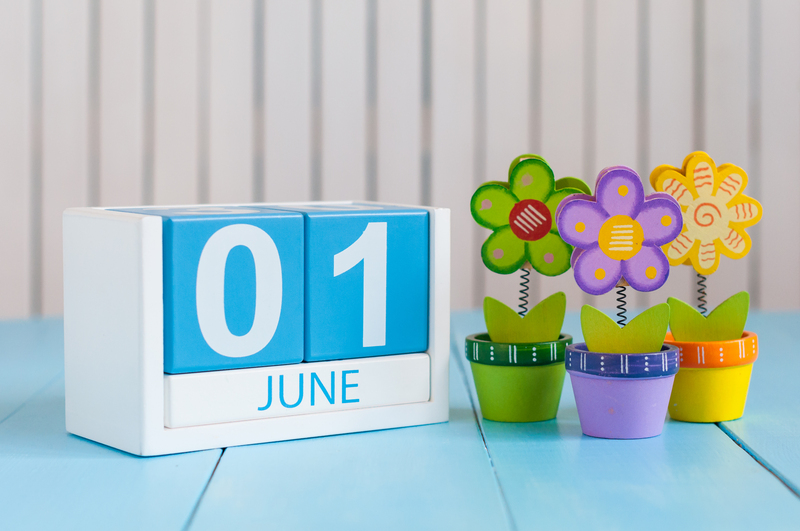Restoring Wooden Floor Gaps and Scratches
Posted on 14/03/2025
Wooden floors are a cherished feature in many homes, evoking a sense of natural beauty and timeless elegance. However, over time, these floors can develop gaps and scratches that detract from their visual appeal and integrity. Fortunately, with the right tools, materials, and techniques, you can restore your wooden floors to their former glory. In this article, we will delve into the step-by-step process of addressing wooden floor gaps and scratches, providing you with practical tips and insights.
Understanding Wooden Floor Gaps
Wooden floor gaps typically occur due to fluctuations in humidity and temperature. Wood expands and contracts based on the surrounding environment, leading to gaps forming between floorboards. Addressing these gaps effectively can prevent further damage and improve the aesthetic appeal of your floors.

Steps to Fix Wooden Floor Gaps
1. Identify the Gaps: Begin by thoroughly inspecting your wooden floor. Identify the gaps that need to be filled. Use a moisture meter to ensure that the wood has sufficiently acclimatized to its environment before you proceed with repairs.
2. Cleaning the Gaps: Remove any debris or dirt from the gaps using a vacuum cleaner or a soft brush. This will ensure that the filler adheres properly.
3. Choosing the Filler: Various fillers can be used to fill floor gaps, including rope, wood putty, or flexible fillers. Choose a filler that matches the color and texture of your wooden floor.
4. Applying the Filler: For flexible fillers, use a caulking gun to apply the filler into the gaps. Smooth the filler using a putty knife to ensure an even surface.
5. Sanding and Finishing: Once the filler has dried, sand the area lightly to ensure it is level with the rest of the floor. Finish by applying a sealant or wood finish that matches the existing floor.
Addressing Wooden Floor Scratches
Scratches on wooden floors are inevitable, especially in high-traffic areas. However, you can minimize their appearance and restore the beauty of your floors with the following steps:
1. Assess the Damage: Determine the severity of the scratches. Superficial scratches can often be dealt with using simple methods, whereas deeper scratches may require more extensive repairs.
2. Clean the Area: Clean the damaged area with a damp cloth to remove dust and debris. This will help you clearly see the extent of the scratches.
3. Using a Wood Marker: For minor scratches, a wood marker that matches the color of your floor can be an effective solution. Simply fill in the scratch with the marker and wipe off any excess.
4. Sanding and Refinishing: For deeper scratches, use fine-grit sandpaper to lightly sand the affected area. Wipe away the dust with a damp cloth. Apply a matching wood finish or stain and allow it to dry.
5. Using a Wood Filler: If the scratch is particularly deep, apply wood filler that matches the color of your floor. Smooth it out with a putty knife, let it dry, and then sand and refinish the area.
Tips for Maintaining Wooden Floors
- Humidity Control: Use a humidifier or dehumidifier to maintain consistent humidity levels and prevent wood from expanding or contracting excessively.
- Protective Pads: Place felt pads under furniture legs to prevent scratches and dents.
- Regular Cleaning: Sweep or vacuum regularly to remove dirt and debris that can cause scratches.
- Rugs and Mats: Use rugs or mats in high-traffic areas to reduce wear and tear on your floors.
- Avoid Harsh Cleaners: Use wood-specific cleaners and avoid excessive moisture when cleaning your floors.
Pros and Cons of DIY Floor Restoration
Pros:
- Cost-Effective: Restoring your wooden floors yourself can save you money compared to hiring professionals.
- Satisfaction: There's a sense of accomplishment that comes from successfully completing a DIY project.
- Customization: You have control over the materials and methods used, allowing for customized results.
Cons:
- Time-Consuming: Floor restoration can be a time-intensive process, especially for novice DIYers.
- Skill and Knowledge Required: Achieving professional-quality results requires a certain level of skill and understanding of the restoration process.
- Potential for Mistakes: Incorrectly applied fillers or finishes can lead to further damage or unsatisfactory results.

Takeaways
Restoring wooden floor gaps and scratches is a manageable task with the right knowledge and tools. Regular maintenance and timely repairs can significantly prolong the life and beauty of your wooden floors. Always take the time to assess the extent of damage and choose appropriate materials and techniques for the best results.
Conclusion
Wooden floors add warmth and character to any home, but they require care and attention to maintain their appearance and integrity. By addressing gaps and scratches promptly and using the proper restoration techniques, you can keep your floors looking stunning for years to come. Whether you choose to undertake the restoration yourself or hire professionals, understanding the process can help you make informed decisions and achieve the best possible outcome for your wooden floors.

